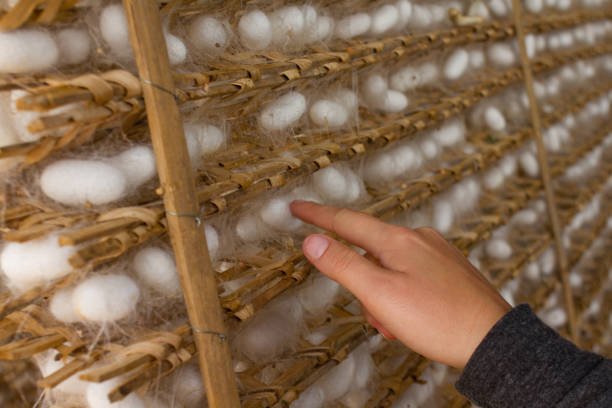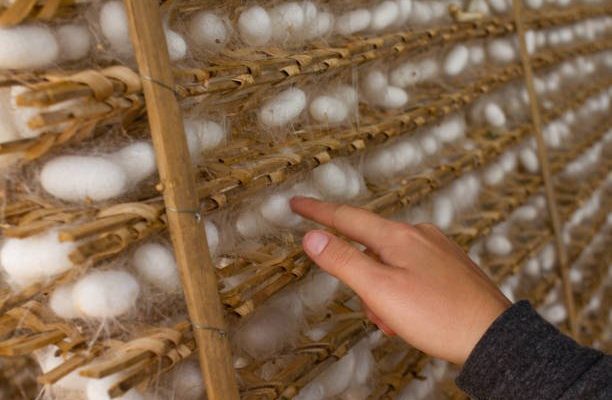
Let’s dive into how to kick off this fascinating club! Don’t worry if you’ve never dealt with silkworms before; I’ll walk you through every step of the process, making it as smooth as possible. Here’s the thing: you don’t need to be an expert; just a passion for learning and sharing knowledge will go a long way. Together, we’ll turn blank pages into vibrant stories filled with the wonders of silkworms.
Understanding Silkworms and Their Importance
Before you get started, it’s crucial to understand what silkworms are and why they matter. Silkworms, specifically the *Bombyx mori* species, have been cultivated for thousands of years for their silk. This silk was once so valuable that it was used as currency in ancient China! But beyond their economic significance, these creatures are fantastic for teaching kids about life cycles—starting from eggs to caterpillars, then pupa, and finally emerging as moths.
In addition to learning about biology, raising silkworms encourages responsibility and patience. Kids will see firsthand how nurturing a living thing requires care and attention. It’s a wonderful way to teach empathy while introducing students to the wonders of the natural world.
You might be wondering how these small creatures can make such a big impact. Think of silkworms as a gateway to discussing broader topics like sustainable practices, environmental stewardship, and the biology of insects. By fostering curiosity and enthusiasm, you’re not just starting a club; you’re planting seeds for future scientists, environmentalists, and responsible adults.
Gathering Support and Resources
To launch your silkworm breeding club, you’ll need a bit of support. Start by chatting with teachers, school administrators, and parents. Getting their buy-in can help establish credibility. You can share your enthusiasm by highlighting the educational benefits of silkworm breeding, such as learning about life cycles, genetics, and ecology.
Next, you’ll need materials. This includes acquiring silkworm eggs, a safe and comfortable habitat for them, and food. Silkworms primarily eat mulberry leaves, which might require a bit of research on your part. You can either find a local source or start your own mulberry tree. Many schools even have gardening clubs that could help with this part!
Don’t hesitate to reach out to local agricultural extension services or universities for additional resources. Many times, they have programs that support school projects, and they might be willing to provide you with useful contacts or educational materials. Networking is key!
Creating a Club Constitution
Once you have the foundational support, it’s time to formalize your club. Creating a club constitution is like setting the rules of a game before you start playing. Outline the club’s goals, meeting schedules, and membership requirements. This not only provides structure but also invites students to take ownership of their involvement.
In your constitution, consider including:
- Purpose of the club
- Meeting frequency and location
- Club roles and responsibilities
- Membership guidelines
Establishing clear guidelines can help your club run smoothly and keep everyone on the same page. Plus, it gives students a sense of accountability!
Setting Up the Silkworm Habitat
Now comes the fun part: setting up the habitat! Silkworms don’t need a lot of fancy gear. You can use simple materials like plastic containers or jars with breathable lids. Ensure the habitat is clean and spacious enough for the worms to thrive. Think of it like creating a cozy apartment for your silkworms, where they can grow and thrive.
When choosing the right space, remember:
- The temperature should be around 70-80°F (21-27°C).
- Good ventilation is necessary to prevent mold.
- Ensure that fresh mulberry leaves are accessible for feeding.
You might want to decorate the habitat to make it more engaging for students. Just keep in mind that anything you add should be safe for the silkworms. You can even include educational labels to teach kids about each stage of the life cycle!
Feeding and Caring for Silkworms
Feeding silkworms is an essential part of their care. While it sounds simple, it requires regular attention. Here’s a quick rundown on how to feed them properly:
- Provide fresh mulberry leaves daily.
- Remove any uneaten leaves to prevent mold.
- Keep the habitat clean by changing the bedding regularly.
Students can rotate responsibilities to ensure that the silkworms are well cared for. This not only teaches them about the lifecycle but also about teamwork and responsibility. Plus, the joy of watching them grow and transform into moths is a thrilling experience.
Integrating Curriculum and Activities
Integrating your silkworm breeding club with the school curriculum can enhance the learning experience. Consider organizing science lessons around the biology of silkworms, covering topics like metamorphosis, genetics, and their role in ecosystems.
You can also plan fun activities related to the silkworms. Here are a few ideas:
- Host a “Silkworm Day” where students present what they’ve learned.
- Create art projects featuring silk and the life cycle of silkworms.
- Plan a field trip to a local silk farm if possible.
These activities engage students in different subjects, from science to art, while keeping their focus on silkworms. The cross-curricular approach can spark creativity and deeper understanding.
Sharing Your Journey
Finally, don’t forget to share your club’s journey with the larger school community. Regular updates via newsletters, social media, or school assemblies can showcase what students have learned. This not only enhances their pride in the project but also encourages more students to get involved.
Sharing can involve:
- Documenting the life cycle of silkworms with photos and videos.
- Creating a presentation or poster to display at school events.
- Inviting families to see the club’s progress during open houses or parent-teacher nights.
Engaging the community can help build interest and support for future projects, reinforcing the idea that learning can be a collaborative and enjoyable experience.
Starting a silkworm breeding club in schools is not just about raising insects; it’s about fostering curiosity, responsibility, and teamwork among students. By creating an engaging environment, you can spark a love for science and nature that lasts a lifetime. Taking the time to set up the right resources, gather support, and integrate educational activities will ensure the club flourishes.
So, grab those silkworm eggs and get started! You’ll be amazed at the transformation—not just of the silkworms, but also in the enthusiasm and knowledge of the students involved. Now, who’s ready to learn and grow with silkworms?

